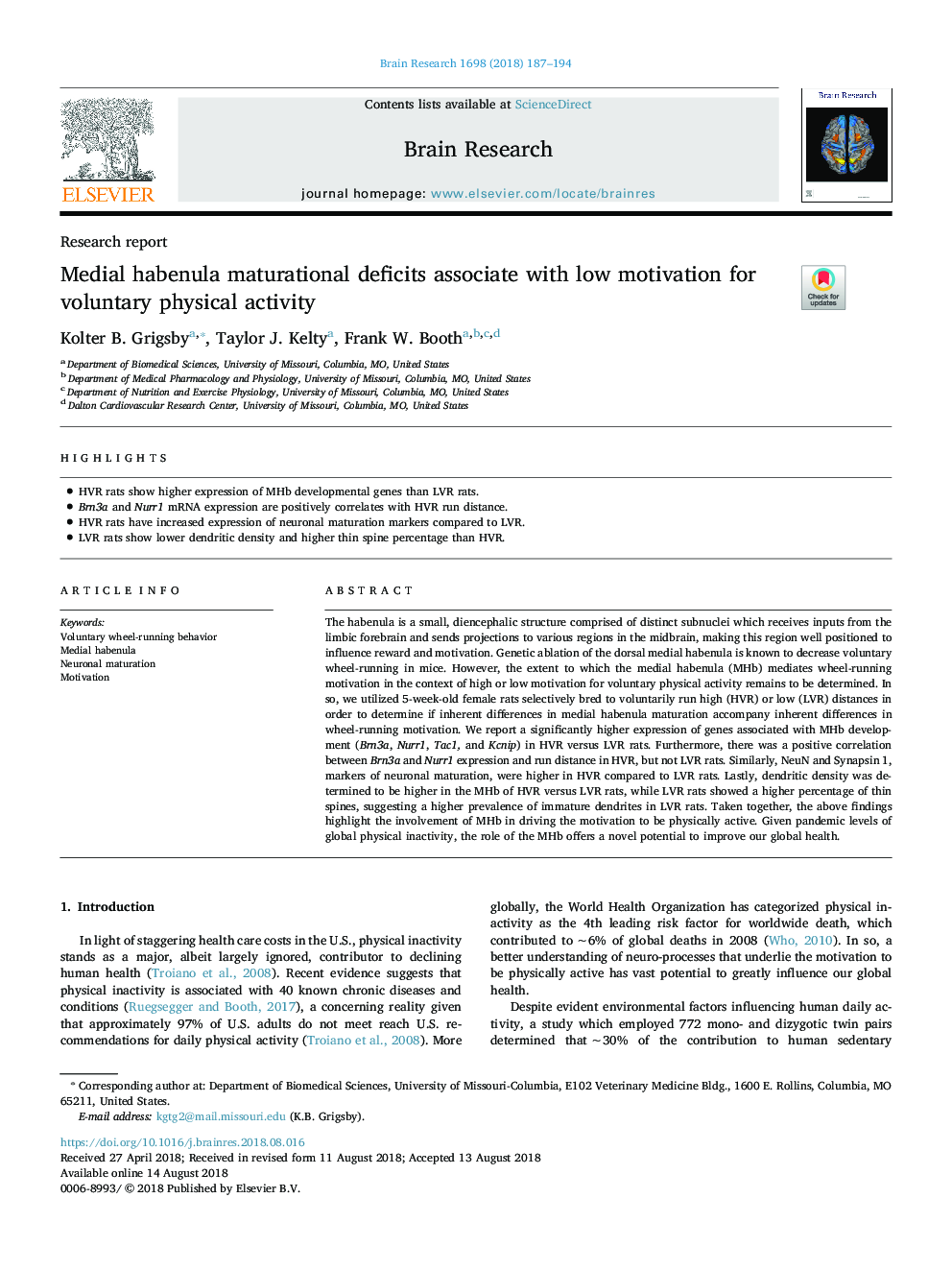| کد مقاله | کد نشریه | سال انتشار | مقاله انگلیسی | نسخه تمام متن |
|---|---|---|---|---|
| 8839649 | 1613746 | 2018 | 8 صفحه PDF | دانلود رایگان |
عنوان انگلیسی مقاله ISI
Medial habenula maturational deficits associate with low motivation for voluntary physical activity
ترجمه فارسی عنوان
کمبود متابولیسم بدنی همراه با انگیزه کم برای فعالیت بدنی داوطلبانه است
دانلود مقاله + سفارش ترجمه
دانلود مقاله ISI انگلیسی
رایگان برای ایرانیان
موضوعات مرتبط
علوم زیستی و بیوفناوری
علم عصب شناسی
علوم اعصاب (عمومی)
چکیده انگلیسی
The habenula is a small, diencephalic structure comprised of distinct subnuclei which receives inputs from the limbic forebrain and sends projections to various regions in the midbrain, making this region well positioned to influence reward and motivation. Genetic ablation of the dorsal medial habenula is known to decrease voluntary wheel-running in mice. However, the extent to which the medial habenula (MHb) mediates wheel-running motivation in the context of high or low motivation for voluntary physical activity remains to be determined. In so, we utilized 5-week-old female rats selectively bred to voluntarily run high (HVR) or low (LVR) distances in order to determine if inherent differences in medial habenula maturation accompany inherent differences in wheel-running motivation. We report a significantly higher expression of genes associated with MHb development (Brn3a, Nurr1, Tac1, and Kcnip) in HVR versus LVR rats. Furthermore, there was a positive correlation between Brn3a and Nurr1 expression and run distance in HVR, but not LVR rats. Similarly, NeuN and Synapsin 1, markers of neuronal maturation, were higher in HVR compared to LVR rats. Lastly, dendritic density was determined to be higher in the MHb of HVR versus LVR rats, while LVR rats showed a higher percentage of thin spines, suggesting a higher prevalence of immature dendrites in LVR rats. Taken together, the above findings highlight the involvement of MHb in driving the motivation to be physically active. Given pandemic levels of global physical inactivity, the role of the MHb offers a novel potential to improve our global health.
ناشر
Database: Elsevier - ScienceDirect (ساینس دایرکت)
Journal: Brain Research - Volume 1698, 1 November 2018, Pages 187-194
Journal: Brain Research - Volume 1698, 1 November 2018, Pages 187-194
نویسندگان
Kolter B. Grigsby, Taylor J. Kelty, Frank W. Booth,
